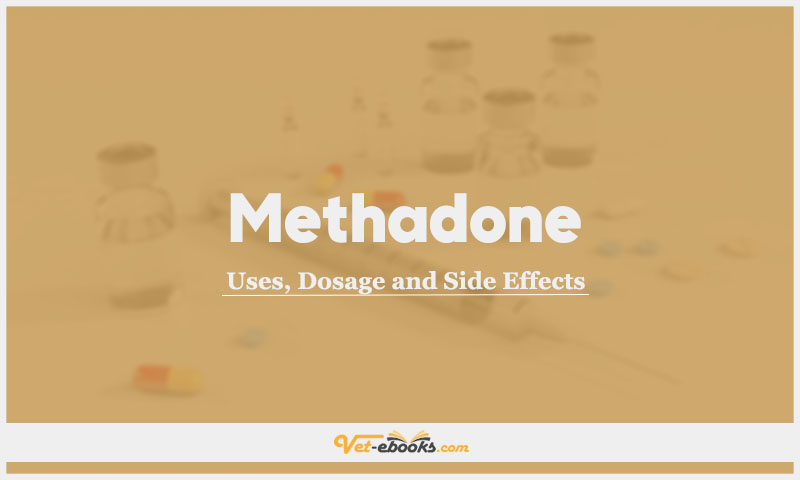Methadone In Dogs & Cats: Uses, Dosage and Side Effects

Overview
The analgesic effects are facilitated through the activation of the mu opioid receptor.
Uses of Methadone
- Management of moderate to severe pain throughout the perioperative period.
- The integration of sedative and pre-anesthetic medications into protocols to enhance sedation and analgesia outcomes.
- Methadone has the potential to be delivered epidurally for the purpose of providing analgesia.
- In dogs, the duration of analgesic effects resulting from epidural administration of methadone at a dosage range of 0.1-0.3 mg/kg is estimated to be around 8 hours.
Dose of Methadone in Dogs and Cats
Dogs:
- Analgesia: 0.1–0.5 mg/kg i.m. or 0.1–0.3 mg/kg i.v. prn.
Cats:
- Analgesia: 0.1–0.5 mg/kg i.m. or 0.1–0.3 mg/kg i.v. prn.
- Doses in the range of 0.6 mg/kg are appropriate for oral transmucosal administration in cats.
Drug Dosage Calculator
You Should Give:
Side Effects of Methadone in Dogs and Cats
- Methadone has the potential to induce respiratory depression.
- Vomiting is infrequent, despite the fact that methadone induces constriction of gastrointestinal sphincters, including the pyloric sphincter, and may lead to decreased gastrointestinal motility with prolonged use.
- Methadone has the ability to traverse the placenta, perhaps leading to sedative impacts on newborns born to female dogs who have received treatment with methadone before giving birth.
- Naloxone has been found to be effective in the management of severe adverse effects.
Contraindications of Methadone in Dogs and Cats
- No information is available.
Some Notes:
- The concomitant use of narcotic analgesics with other central nervous system (CNS) depressants, such as anaesthetics, antihistamines, barbiturates, phenothiazines, and tranquillizers, may lead to an elevated risk of CNS or respiratory depression.
- Methadone has similar pharmacological properties to morphine and is useful in similar situations.
- It provides profound analgesia with a duration of action of 3–4 hours in dogs and cats.
- Accumulation is likely to occur after prolonged repeated dosing which may allow the dose to be reduced or the dose interval extended.
- Methadone can be given i.v. without causing histamine release and does not cause vomiting when given to animals preoperatively.
- Transient excitation may occur when methadone is given i.v.
- Oral methadone is rarely used in cats and dogs due to a high first-pass metabolism leading to low plasma concentrations after administration.
- Methadone is absorbed into the systemic circulation after oral transmucosal (OTM) administration to cats and provides pain relief when administered by this route.
- However, the authorized preparation contains preservatives and causes salivation when given by the OTM route.
- Respiratory function should be monitored when given i.v. to anaesthetized patients.
- The response to all opioids appears to vary between individual patients, therefore, assessment of pain after administration is imperative.
- Methadone is metabolized in the liver, and some prolongation of effect may be seen with impaired liver function.
Tip
Do You Want To Increase Your Veterinary Knowledge and Practical Skills?
You Can Now Browse and Download +3000 Books For Veterinary Professionals & Students Online.
Download Veterinary Books




















